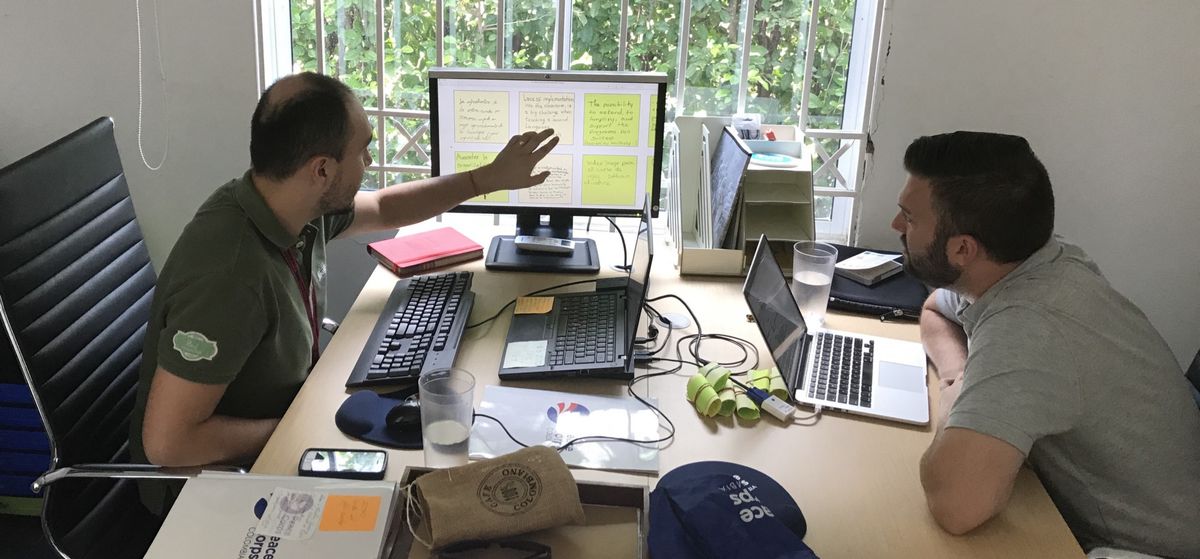The ICT4D Guide
My ICT4D Notebook
I’ve worked at the intersection of technology and international development for the past 10 years, focusing much of that time in ICT4D (Information and Communication Technologies for Development).
I have had the opportunity to work for a number of organizations, and to travel around the world and work hands-on with communities, organizations, students, and entrepreneurs in a common goal of using technology to have a positive impact on peoples’ lives.
As others have shared with me over the years their resources, links, and jumping-off points for working in various tech-related areas for social good — — I have grown accustomed to doing the same.

I found myself so often referencing the same set of toolkits and resources that I started an evergreen list that I would update as needed. Then I added short descriptions to that list, and then I would ‘tag’ it with a few words — you can see where I’m going with this.


Believe me, I would have definitely preferred for something like this to already exist, and I could just scrape it from time to time for updates.
But it didn’t yet exist, and it was something I needed.
So rather than just sit around and twiddle my thumbs waiting for some organization or academic unit or non-profit to put together a PDF toolkit that would have to go through layers of approval — I just decided to compile what I had, clean it up a bit, and put it out there for the world as best I could.
Start where you are, use what you have, do what you can. — Arthur Ashe
The Future of the Guide—It Needs You
Now. I want to be clear. I’ll be the first to tell you that it’s not a perfect resource. The writing could be cleaned up. Some parts need expanding while others need to be trimmed. And obviously I don’t work in every sector that leverages ICT4D — so there are going to be gaps — sometimes big ones.
But it’s just the start. I’m a firm believer in Cunningham’s Law which states,
“If you want the right answer on the Internet, don’t ask the question — just > post the wrong answer.”
So I’m here posting the wrong answer in the hopes that I can get other voices involved with the ICT4D Guide. You don’t have to be an expert or an organization — even an editor would help! Any and all voices are welcome here.
The Roadmap
There’s a lot of good stuff to work on here. Here are just a few:
- More Contributors. I want to make it easier to contribute (not just on Github) — so this might include fleshing out ways to participate on social media, marketing out a hashtag (#ict4dguide), and eliciting ideas for other folks to get involved.
- Recognizing Contributors. I’d like to make a page on ICT4DGuide.org to incentivize folks to help but really just for contributors to be recognized for their work.
- Expanded Guidance. The ‘easier’ portion of the Guide is just the section of topical links and resources. I’d like to spend more time thinking through either lesson plans, checklists, and explainers for these topics.
- Additional Topics. Current topic areas can be expanded, and others added. I have notes and a handful of links for these areas, but I need your help: Accessibility, Agriculture, AI, Appropriate Technology, Blockchain, Civil Society, Data Visualization, Disaster Preparedness, Drones, Entrepreneurship, Environment, Finance, Health, Systems Thinking…and many others!
- Dynamic Table. While the Gitbook is great, and outputting to ‘PDF’, ‘MOBI’, and ‘EPUB’ are fantastic for portability. I’m working on a dynamic table that can just be linked from ICT4DGuide.org. I have a beta of this I’m playing with right now.
- Chatbot. An extension of the dynamic table, I’ve been playing with a chatbot linked to a Machine-Learning-infused tech stack to deliver on-demand links to resources that fit what you are asking for. This is in my mind the item that has partially led me to keep plugging along with the mass of links and descriptions and tags, as it will make it the most accessible to as many people as possible.
- Physical Book. Inspired by Jan Chipchase’s Field Study Handbook, I don’t actually think that it would take that much to infuse these contents with the proper amount of stories, insights, and lessons-learned to make an interesting introduction to ICT4D and digital development more generally. Just an idea.
As you can see, there is a lot to be done.
But I’ve been very pleased with the support of folks so far — particularly over at the Facebook ICT4D Group page.
This is just the beginning.
